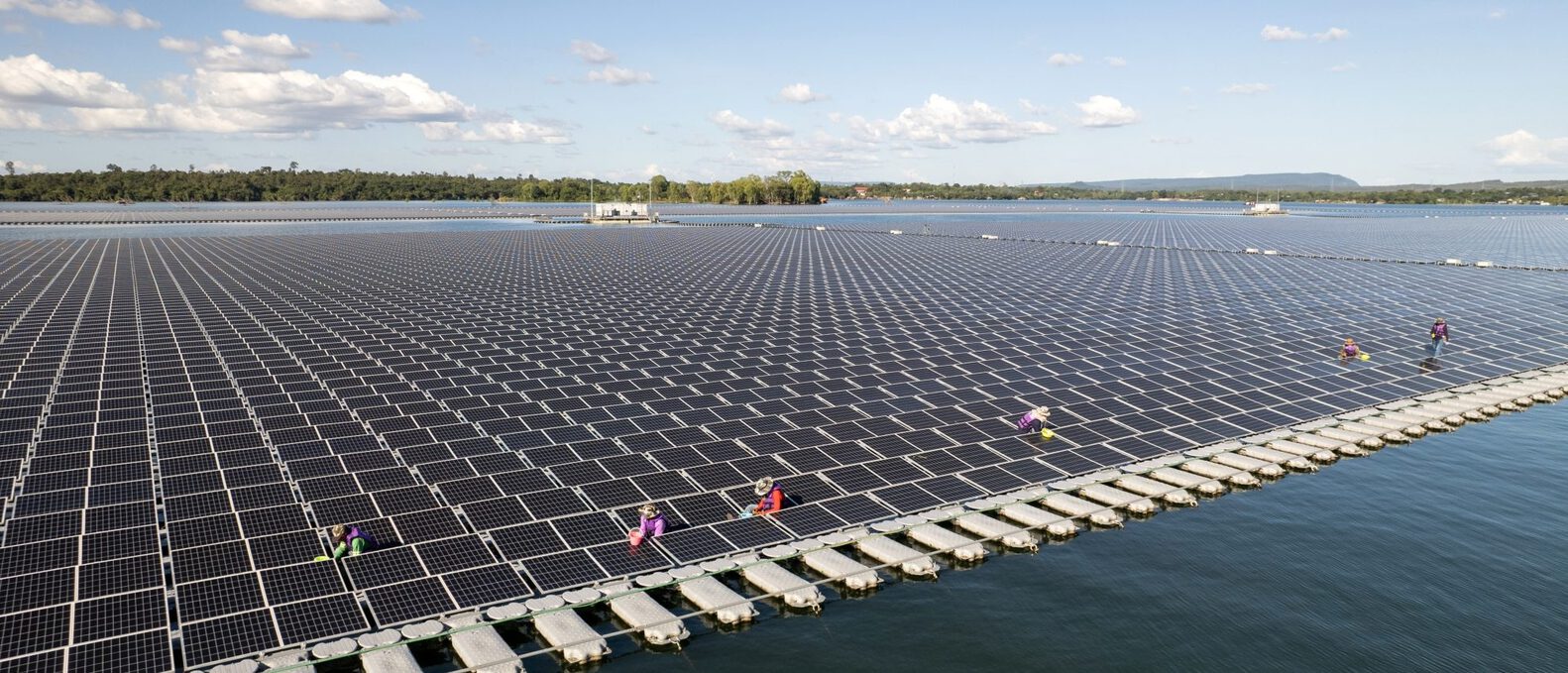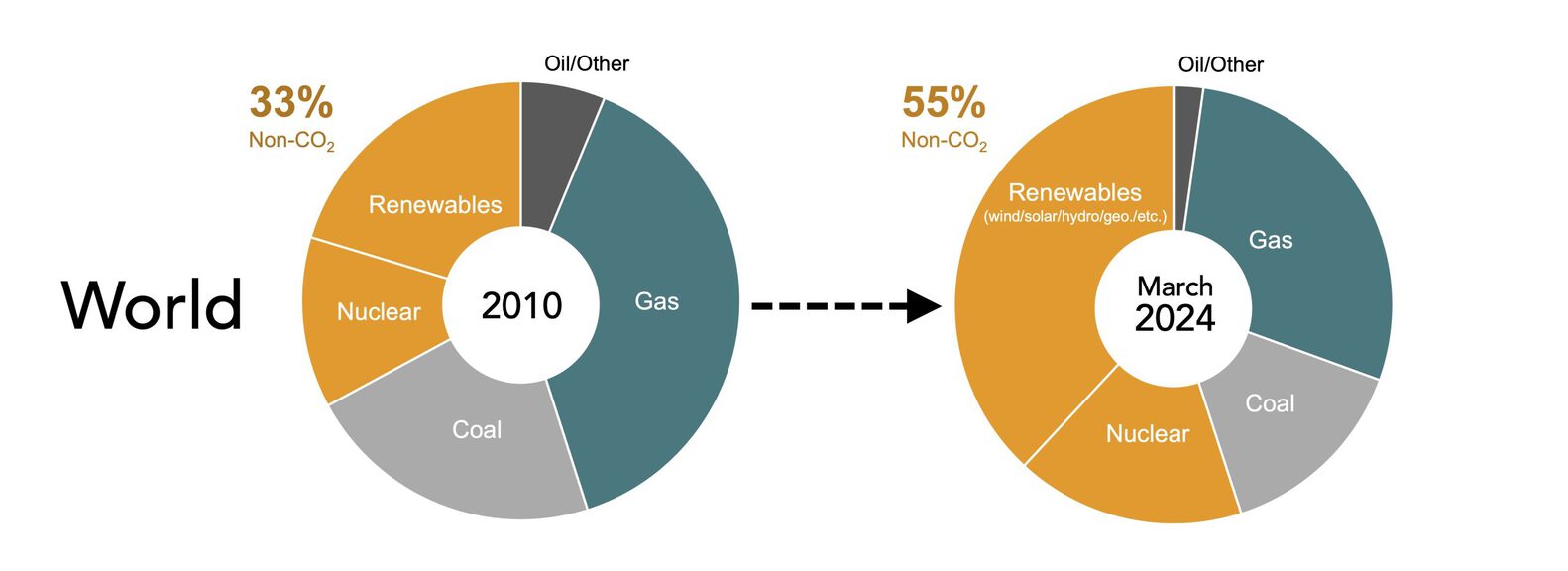
The relentless drumbeat of climate disasters in the headlines—scorching heat waves, raging wildfires, historic floods, and crippling droughts—are no longer anomalies. These extreme weather events, driven by human-induced climate change, have become a grim new reality across much of the globe. They are increasingly frequent and severe, symptomatic of a broader and more pervasive environmental crisis.
Such calamities place an enormous strain on our built environment. Outdated infrastructure struggles under the pressure of severe weather, and buildings and equipment, not designed to withstand such extremes, are failing more often, endangering lives.
Yet there are reasons for optimism. The built environment is not just a victim of climate change; it is also playing a crucial role in adapting to and mitigating its most devastating impacts. Several promising developments illustrate that a sustainable, resilient future is within reach.
Carbon Plummets
The U.S. building sector achieved a remarkable milestone: by 2023, CO2 emissions had dropped by an impressive 31% from 2005 levels, surpassing the significant reduction seen in 2020 due to the COVID-19 pandemic. Similarly, the EU building sector saw a 31% decrease in emissions from 2005 levels by 2021, with further reductions continuing through 2023. These achievements underscore the effectiveness of planning and designing low- and zero-carbon buildings, implementing passive and nature-based design solutions, scaling up renovations, upgrading equipment, electrifying buildings, improving energy codes, and adopting renewable energy sources.

Even more remarkable is that retrofitting, renovating, reusing, and adapting existing buildings now account for nearly half of all U.S. architecture billings. This trend of upgrading existing buildings instead of demolishing and constructing new ones offers numerous benefits, including enhanced building resilience, strengthened community identity, lower construction costs, reduced waste, and decreased embodied and operational carbon emissions.
Transformation Underway
The building sector is a major consumer of electricity, accounting for a significant portion of global demand. In the U.S., a staggering 74% of all electricity is used to operate buildings, while globally, this figure stands at 50%. This demand is even greater when considering the electricity consumed in constructing buildings and infrastructure and manufacturing building materials. This reality underscores a crucial need: decarbonizing the electricity sector is essential as we continue to electrify the built environment.
Fortunately, an important transformation is underway. While fossil fuels dominated electricity generation in 2010, comprising two-thirds of both U.S. and global production, the landscape has shifted dramatically. By March 2024, 47% of U.S. electricity came from non-CO2-emitting sources, driven by a surge in renewables contributing 28% and nuclear power providing 19%.

Globally, the progress is even more impressive. Approximately 55% of electricity is now generated from non-CO2-emitting sources, with renewables accounting for 38% and nuclear power contributing 17%. This shift signifies a significant leap toward cleaner electricity generation, particularly within the built environment, and highlights important advancements in reducing our reliance on fossil fuels.
Follow the Money
For the second consecutive year, global investment in solar photovoltaics (PV) is projected to surpass spending on all other electricity generation technologies combined. This milestone, highlighted in the International Energy Agency’s (IEA) latest World Energy Investment report, marks a pivotal moment in the transition toward a sustainable energy future. According to the report, solar PV investment is expected to reach an unprecedented $500 billion in 2024, driven by declining module prices and the increasing global demand for clean energy. This financial commitment reflects a societal shift toward prioritizing sustainable practices, reducing carbon emissions, and combating climate change. It sends a powerful message to markets and investors about the long-term viability and profitability of renewable energy technologies.

Contrary to the Political Rhetoric, People Want Action
Finally, a new survey reveals overwhelming global support for increased government action on climate change. The Peoples’ Climate Vote 2024, the largest standalone public opinion poll on the issue, found that a staggering 80% of people worldwide want their governments to take stronger action to address the climate crisis.
This striking consensus transcends borders and cultures. The survey includes over 73,000 respondents across 77 countries, representing 87% of the global population. Even more significantly, 86% of those surveyed believe countries should prioritize climate collaboration over geopolitical differences, underscoring the need for collective action in the face of rising global challenges.
In the U.S., the latest Yale Program on Climate Change Communication survey shows that a majority of Americans, 72%, believe climate change is occurring, with 58% attributing it primarily to human activities. The same survey indicates that 62% of the population favors political candidates who advocate for climate action, and 37% consider themselves pro-climate voters. Additionally, a recent national survey conducted by the Pew Research Center reveals that nearly three-quarters of individuals perceive that climate change is adversely affecting people.


